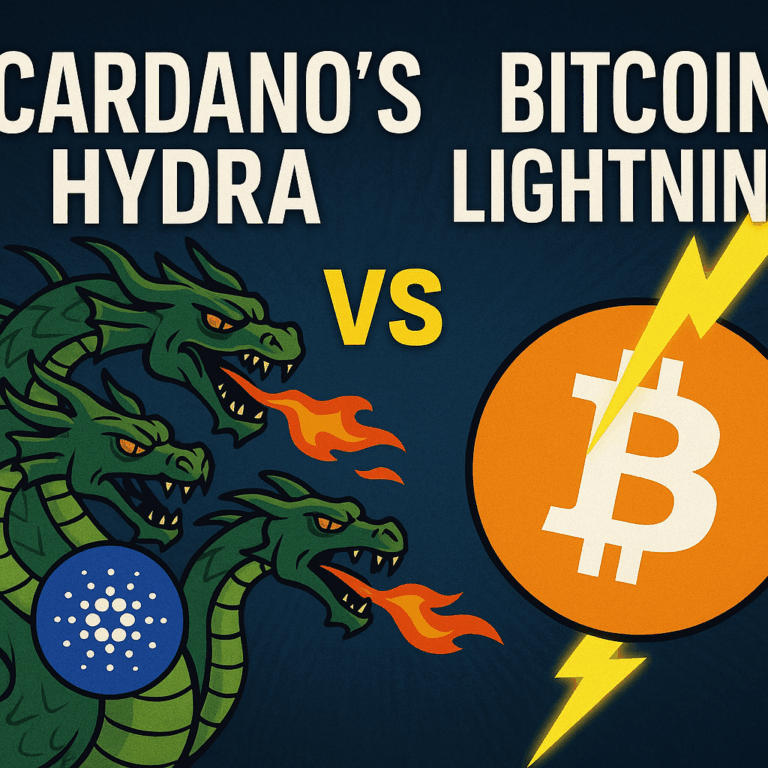Okay, so Ethereum has Pendle — the cool kid who turned yield into a tradable asset class and built a $7B market out of “future money.” But now, something similar (and arguably smarter) is brewing on Cardano — and it’s called Pulse.
This isn’t just another DEX or lending protocol. Pulse is building a new DeFi primitive — a marketplace for time itself. And together with Strike Finance this could become a game changer

⏳ The Big Idea: Make Yield Tradeable
Right now, when you stake ADA, lend on Liqwid, or provide liquidity on Minswap, you’re earning yield — but that yield is stuck. You can’t trade it. You can’t sell it. You can’t hedge it.
Pulse fixes that.
When you deposit any yield-bearing asset (say, your Strike LP token or Liqwid deposit token), Pulse splits it into two parts — just like Pendle does on Ethereum:
- 🪙 PT (Principal Token): the original investment — your main bag.
- 💸 YT (Yield Token): your future yield — the bag’s passive income.
You can trade either one. That means:
- Need quick liquidity? Sell your YT and cash out yield upfront.
- Feeling bullish on yields? Buy discounted YTs to earn more later.
- Want to sleep like a TradFi boomer? Lock in fixed returns by offloading yield exposure.
Pulse takes what was stagnant and turns it liquid.
⚔️ Pendle vs. Pulse — The Ethereum/Cardano Face-Off
| Feature | Pendle (Ethereum) | Pulse (Cardano) |
|---|---|---|
| 🧩 Core Idea | Split yield from principal (PT/YT model) | Same PT/YT design, but adapted for Cardano’s eUTXO model |
| 🌐 Ecosystem | Runs on multiple chains (ETH, Arbitrum, Berachain, etc.) using LayerZero | Built natively on Cardano; future-ready for Midnight and Hydra |
| 🧱 Tech Stack | Solidity + LayerZero (OFT) messaging | Plutus + Helios smart contract framework |
| 💡 Founder | TN Lee & Pendle Labs | Christian Schmitz (creator of Helios) |
| 📊 TVL | $7B+ | Launching 2025 — targeting major ADA DeFi inflow |
| ⚙️ Integrations | stETH, eETH, rsETH, USDe | Strike LPs, Liqwid, Surf, Minswap, Optim’s sOADA |
| 🧠 Yield Engine | ERC standard yield-bearing tokens | “SY tokens” standardize all yield sources on Cardano |
| 🧮 AMM Design | Time-decay pricing curves | Cardano’s first yield-optimized AMM |
| 🔒 Governance | vePENDLE voting + emissions sync | Open-source, audited, and community-driven rollout |
| 🧭 Roadmap | Multichain scaling + LayerZero infra | Public Testnet (Oct 2025), Mainnet (Q4 2025), Institutional Layer (Q2 2026) |
Pulse isn’t just copying Pendle — it’s rebuilding the concept natively for Cardano’s tech and logic. No wrapped tokens. No ERC-20 bridge hacks. Just pure ADA-native composability.
🧬 How It Works (Simplified for Non-Dev Degens)
Here’s how Pulse breaks it down:
- Standardize Yield (SY): Every yield-bearing token (like Strike-LP or Liqwid deposit) is first “wrapped” into a Standardized Yield token (SY) — so the system can treat all yield sources the same way.
- Split into PT & YT: The SY is then divided into Principal Tokens (PTs) and Yield Tokens (YTs). PT = Your principal at maturity; YT = The yield until maturity.
- Trade on the Pulse AMM: Pulse introduces the first yield-optimized AMM on Cardano, adjusting prices based on time to maturity and market yield expectations.
- Auto-Yielding YTs: When you buy YTs, they can automatically start “staking” to collect your share of yield — no extra clicks or gas wars.
This means Pulse could easily plug into existing protocols like Liqwid, Strike, Minswap, or Optim, making yield trading a natural part of Cardano DeFi.
💼 Real Use Cases — Beyond Just “Trading”
- Fixed Yield for LPs: Liquidity providers can sell YTs for guaranteed returns upfront.
- Yield Speculation: Traders can buy cheap YTs to bet on higher APYs.
- Hedging: DAOs and treasuries can sell yield exposure to protect against falling rates.
- Structured Products: Developers can build fixed-income vaults or leveraged yield strategies on top of Pulse.
Basically, Pulse makes time and yield liquid — the holy grail of DeFi.
🧑💻 The Team Behind Pulse
Pulse is built by Christian Schmitz, the genius who created Helios, one of Cardano’s most trusted smart contract frameworks. He’s joined by Shan Zhang, founder of Strike Finance, Cardano’s perpetuals protocol — meaning this team already knows how to build scalable, capital-efficient DeFi systems.
🛣️ Roadmap to Mainnet
- 🧩 Open-Source Contracts: October 2025
- 🧪 Public Testnet: October 2025 (desktop + mobile)
- 🔍 Audit: Q4 2025 (leading security firms)
- 🚀 Mainnet Launch: Q4 2025
- 🏦 Institutional Layer: Q2 2026 — structured yield vaults and cross-chain yield derivatives
🌙 Why It Matters — Especially for Cardano
Pulse could become to Cardano what Pendle is to Ethereum — a liquidity magnet that attracts institutions, hedgers, and sophisticated traders. By unlocking yield as a tradable asset, Pulse connects every corner of Cardano DeFi — Liqwid, Strike, Minswap, Surf, Optim — into one composable ecosystem.
And with Christian’s Helios-based architecture, it’s built to thrive under Cardano’s unique eUTXO model — something Pendle can’t replicate. This could mark Cardano’s entry into on-chain fixed-income markets — the bridge between DeFi yields and traditional finance demand.
💡 Also check out:
- ELI18: So what is Cardano DeFi really?
- How ZEIT delegators most likely get double the rewards
- WTF is the NIGHT token and why Midnight is about to flip the game
Support ZEITGEIST Pool – Single Pool Operator. 0% Fees. 100% Cardano Vibes.
🗣️ Your turn:
If you could trade your future yield like a stock — would you lock it in for stability or degen-trade it for max APY?
Drop your take in the comments 👇



